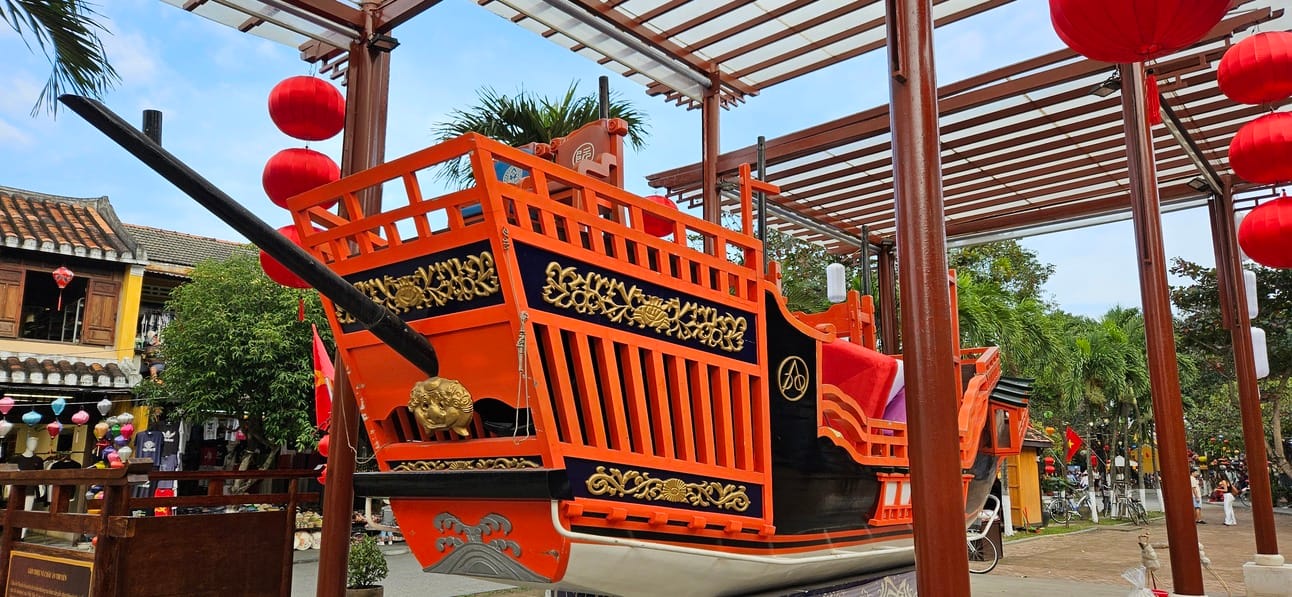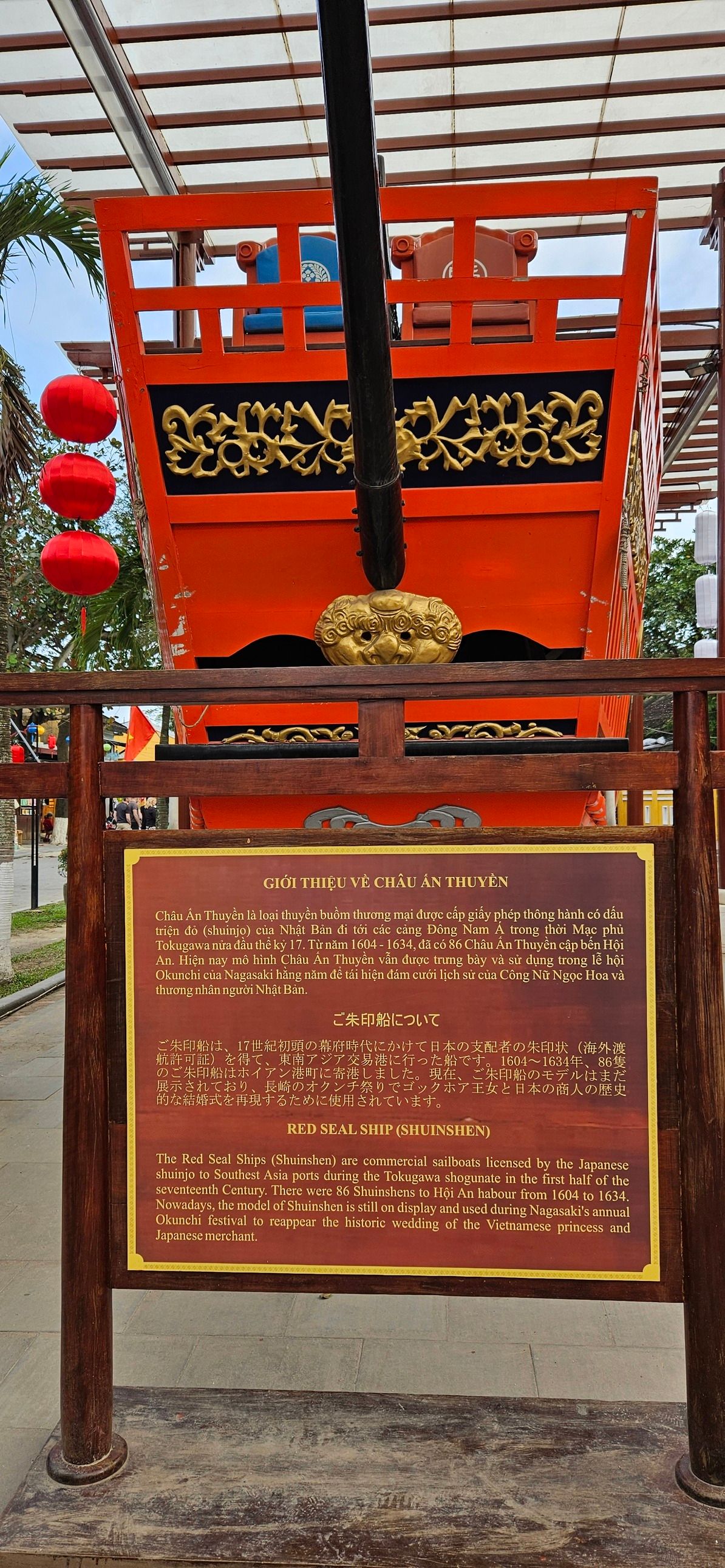- What's Nam
- Posts
- Japanese Influence in Hoi An Old Town
Japanese Influence in Hoi An Old Town
Beyond the Iconic Bridge

Hoi An Old Town, a UNESCO World Heritage Site, is a captivating historical gem where the echoes of international trade and cultural exchange resonate through its streets. Among the many stories this ancient trading hub tells, the influence of Japanese merchants in the 16th and 17th centuries stands out as particularly fascinating. While the Japanese Covered Bridge often steals the spotlight, the Japanese legacy extends far beyond this well-known landmark.
Hoi An’s Historical Significance
Situated along the Thu Bon River, Hoi An flourished as a trading port beginning in the late 1500s. Merchants from China, Japan, and beyond were drawn to its strategic location, transforming the town into a cultural crossroads. The first thing that greets visitors today is the sight of a sea boat near the entrance, a symbol of the town’s maritime past. However, exploring Hoi An reveals that its historical narrative unfolds across a vast area, requiring more than a day to fully appreciate.
The Arrival of Japanese Merchants
Japanese merchants, particularly active from the early 1600s, brought significant cultural and economic influence to Hoi An. During the Edo period, Japan's Tokugawa shogunate issued "red seal" permits that authorized foreign trade. This policy led Japanese traders to seek new markets in Southeast Asia, with Hoi An emerging as a preferred destination.
The town became a center for the exchange of goods like silk, ceramics, and spices. Japanese merchants established a small enclave, building warehouses and residences that reflected their unique architectural styles. This period marked the blending of Japanese aesthetics with local Vietnamese and Chinese elements, a fusion that can still be seen today.

The iconic Red Seal Ship at the entrance of Hoi An Old Town.
Architectural and Cultural Footprints
While the Covered Bridge remains the most celebrated Japanese structure, the subtle influence of Japanese craftsmanship and design can be found in other parts of the Old Town. Many of the ancient houses in Hoi An feature wooden beams and joinery reminiscent of Japanese construction techniques.
Japanese traders also played a role in shaping local customs and traditions. The cultural exchange led to mutual influences in art, cuisine, and religious practices. The remnants of these interactions contribute to the rich tapestry of Hoi An’s identity.
The Decline of Japanese Presence
By the mid-17th century, the thriving Japanese community began to dwindle. The Tokugawa shogunate’s isolationist policies restricted foreign trade, forcing Japanese merchants to withdraw from Hoi An. Despite their departure, the legacy of their brief yet impactful presence remains an integral part of the town’s heritage.
Exploring Hoi An’s Hidden Gems
For visitors, the beauty of Hoi An lies in its layers of history. Beyond the bustling streets filled with lanterns and local crafts, there are quieter corners where the spirit of the past lingers. The sea boat at the entrance serves as a gateway to this living museum, inviting travelers to embark on a journey through time.
Take the time to wander the alleys, discover ancient homes, and explore the vast expanse of the Old Town. Each step reveals a story, and each story is a thread in the rich fabric of Hoi An’s history. While a single day may not suffice to uncover all its secrets, every moment spent in this enchanting town is a window into a world where cultures met, mingled, and left an indelible mark.
Hoi An Old Town is more than its landmarks—it is a testament to the enduring connections forged through centuries of trade and cultural exchange. The Japanese influence, woven into its streets and structures, is a reminder of the town’s golden era as a vibrant international port.